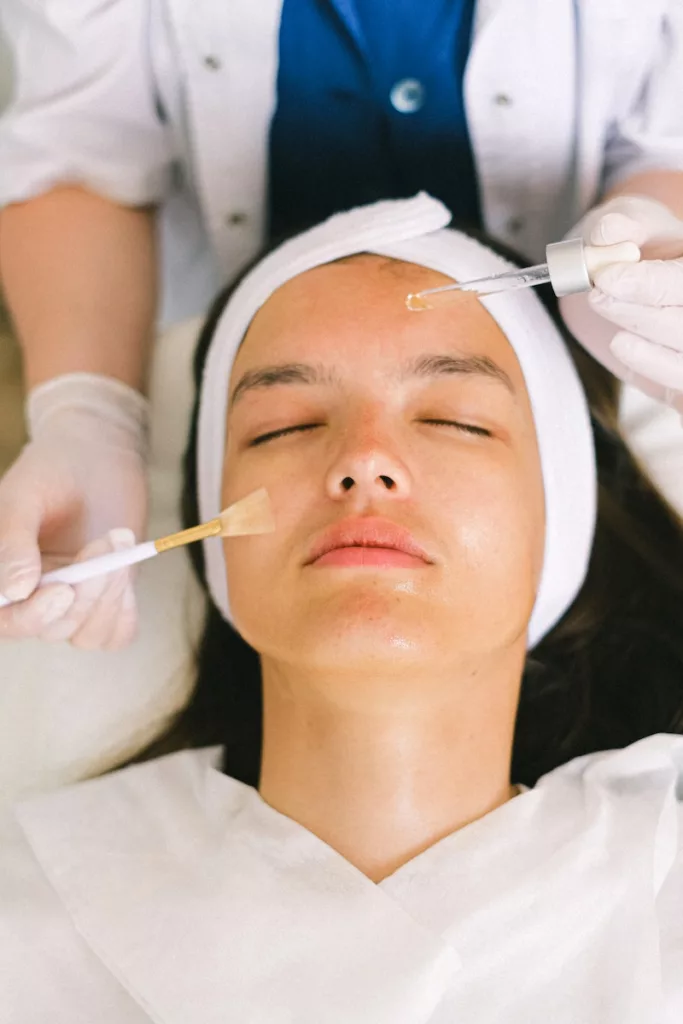
Chemical peel aftercare is extremely important for best results. Embarking on the journey to rejuvenate your skin with a dermapeeling is an exciting step toward achieving a radiant complexion. However, proper aftercare is crucial to ensure the best results and minimize potential side effects. Discover the essential tips for post-chemical peel aka chemexfoliation or dermapeeling ,care to achieve the best results. Learn how to properly take care of your skin after a dermapeeling for a smooth and radiant complexion.
This comprehensive guide will discuss essential dermapeeling aftercare steps to help you achieve the glowing, refreshed skin you desire.
Chemical Peel Aftercare involves Cleaning With Cold Water
After undergoing a chemical peel, your skin may feel sensitive and delicate. To soothe and cleanse your skin without causing further irritation, opt for gentle cleansing using cold water. The cold water helps constrict blood vessels, reducing inflammation and redness. Avoid using hot water as it can exacerbate sensitivity and discomfort.
Begin your cleansing routine by splashing your face with cool water. Gently pat your skin dry with a soft, clean towel, avoiding any rubbing or friction. Cleansing your skin with cold water refreshes and prepares it for the next step in your aftercare routine.
Hydrate Your Skin With a Gentle Moisturizer
A dermapeeling may compromise your skin’s moisture barrier. To replenish moisture, opt for a gentle, non-comedogenic moisturizer to give your skin the necessary hydration.
Apply the moisturizer in gentle, upward motions, focusing on areas that might be drier or more sensitive. Reapplying moisturizer throughout the day can help maintain hydration and support your skin’s natural healing process.
Avoid Sweating after a chemical peel treatment
Give vigorous physical activities a break after a dermapeeling. Sweating can increase the risk of irritation and hinder the healing process. Take it easy for a few days post-treatment and gradually resume your workout routine as your skin heals.
If you find it challenging to resist physical activities, consider engaging in light exercises that won’t cause excessive sweating. Remember, allowing your skin to recover properly will yield more favorable long-term results.
Do Not Use Exfoliators
dermapeeling exfoliate the top layers of your skin, revealing fresh, new cells underneath. Avoid using additional exfoliating products, such as scrubs or brushes, in the days following your treatment.
Over-exfoliation can lead to increased sensitivity and potential damage to your skin’s delicate surface. Instead, focus on gentle cleansing and moisturizing to allow your skin to shed dead skin cells naturally.
Avoid Picking and Peeling Skin
As tempting as it may be, avoid picking, peeling, or scratching your skin after a chemical peel. Picking at your skin can lead to scarring, infection, and uneven healing.
Trust the process and let your skin naturally shed the loosened skin cells over time. If you notice any flaking or peeling, resist the urge to intervene and allow your skin to heal independently.
Hold Off on Retinol Products
Retinol is a potent skincare ingredient known for its rejuvenating properties. However, your skin is already sensitive after a dermapeeling, and introducing retinol products too soon can intensify irritation. It’s best to avoid using retinol-based products for at least a week after your dermapeeling or as your dermatologist recommends.
Conclusion
Achieving radiant, youthful skin through a dermapeeling requires more than just the treatment. With proper and diligent aftercare, chemical peel results can last longer and deliver more satisfying outcomes.
By prioritizing proper chemical peel aftercare, you’re setting the stage for a glowing complexion that exudes confidence and beauty.

